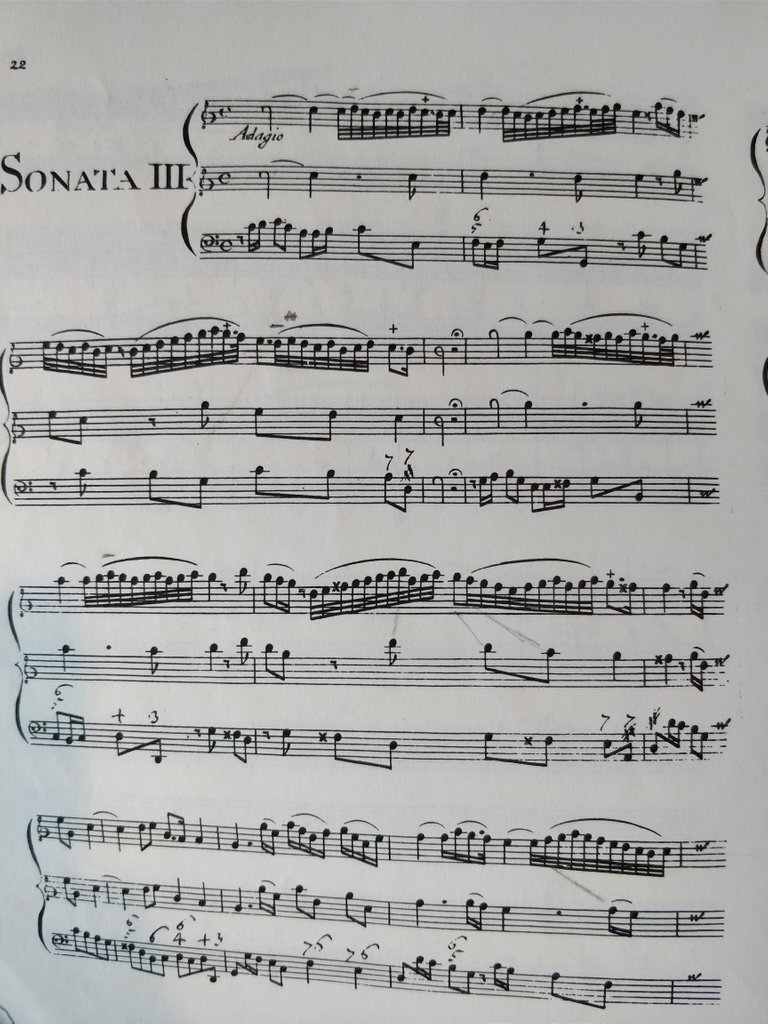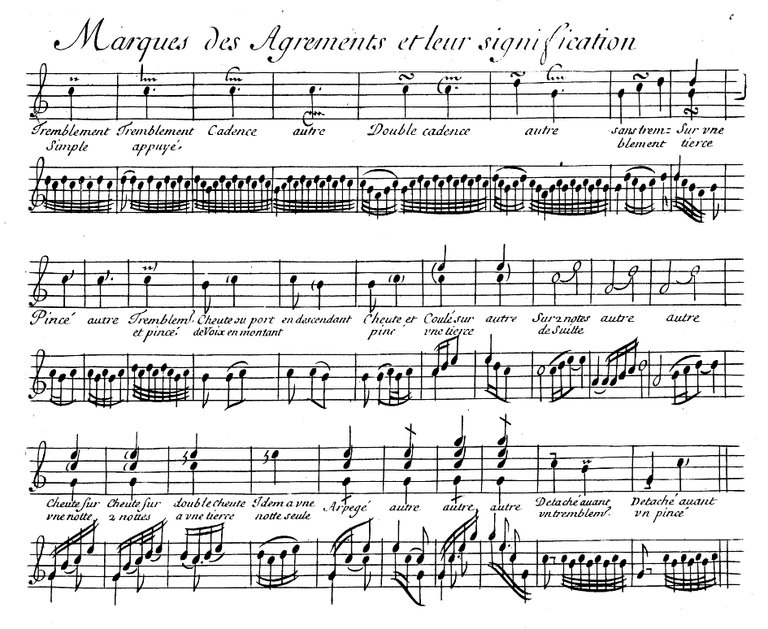
No one disputes the need for embellishments. This is evident from the great numbers of them everywhere to be found. They are, in fact, indispensable... Without them the best melody is empty and ineffective, the clearest content clouded.
CPE Bach.
One of the lost arts from the Baroque (and Classical) era is the skill of improvisation. During the Baroque era, the musician was generally also a composer with a strong understanding of the fundamentals of harmony. These days, a modern Classical musician is a specialist art is trained to play an instrument well with minimal technical risk.
The art of improvisation is inherently a risky endeavour. You can make certain preparations and have a solid harmonic basis, but things can and will go wrong! This is a big no - no in the current recording and perfection based era of music.
As a basic skill, all performers were expected to know and execute flawlessly the small ornamentation that were specific to their time and place. For instance, the multitude of types of trills, mordents, slides and tirades.

However, the true calibre of a musician lay in the ability to create long improvements upon a skeleton. The leading photo (1st one, at the top) was one such example. A rare written example of ornamentation that was notated by Corelli for his 3rd violin sonata. The middle line is the skeleton, and the top line is the sketch of the improvised line.
As you can see, there is significant addition to the skeleton line. This was expected to be done at sight!

It is true that the ornaments described above are absolutely necessary for good execution. But they must be used sparingly or they become too much of a good thing. The rarest and most tasteful delicacies produce nausea if overindulged. The same is true of musical embellishments if we use them too profusely, and attempt to overwhelm the ear.
Quantz.
However, there were also warnings against the overuse of embellishments. It was to be remembered that the ornamentation and improvisation were there to be of service in enhancing the underlying music, and not to be a show of technical prowess.
At Musica Poetica, we encourage our performers to take risks in concert and rehearsal with appropriate ornamentation. We don't punish or judge unsuccessful attempts. In this we hope to create an atmosphere where it is okay to fail, in the hope of finding that amazing moment when it all goes right!
Hi @musicapoetica,
Thank you for an interesting post on music improvisation. Your observation that improvisation is inherently risky, and discouraged in the "perfection based" era of music is interesting. It flies in the face of the popular understanding of both classical music and modern music. I was reminded of this post today, when watching a Beethoven documentary on youtube. It would be interesting to see the sort of live improvisation contests that they held in Beethoven's time, and even in the time of Scott Joplin. I'm not aware that those sorts of contests are very common now, though.
I wanted to let you and your readers know that this post was selected for sharing on the Steemit's Best Classical Music Facebook page, and included in our Roundup Issue #24.
Just to provide context, this is the video from the documentary. @remlaps didn't realize it was a separate video that could be included:That is a great video! Jazz and rap have their improvisation competitions, so the skills are still upheld. Just in different fields of music!
What are your findings from those artists you encourage to go improve more? Are results improving? And how those the audience react to more improve? Do they appreciate it more?
Oooof, I'll try and answer as best as I can in the time I have!
From the performer's side of things. The lack of judgement does encourage people to inprovise and ornament more, this is important because in a profession where the majority of work is freelance, the incentive is to "don't rock the boat" instead of taking risks. Even if they are not ornamenting, there are more risks taken with timbres of sound and interpretations, which makes for a better more entertaining performance as a whole.
Unfortunately, it is difficult for an audience to really notice this sort of thing. We never perform side by side with another ensemble (just not normal in Classical music), so it is hard for audiences to compare and see what they like. Also, audiences (and musicians) have been brainwashed in a way, via recordings and the prioritisation of perfection over communication, to expect and desire performances that are in general non-offensive. Of course, I'm speaking in a general sense, so it is not true across the board, but it is the trend.
Results improve of course, with practice comes the refining of skill. Learning what works and doesn't work. However, the practice is made more difficult as we cover repertoire from over 2 centuries from a multitude of countries. Each country and time era has it's preferred style of composition and improvisation/ornamentation. In the interests of not making t he music sound "weird" but adding embellishments that are "out of place", we do need to study and learn about what is appropriate or not. This learning informs our feeling of what is "natural" or "in good taste".
That said, some players have better affinity for certain styles and times . Speaking personally (@bengy), I think I have a better affinity for the High Baroque and Classical styles. Earlier music I love, but I know I am weaker (in a relative sense, compared to myself in later eras) , and I appreciate that other people do divisions and such things much better than I do!
Thank you for your extensive answer response! Gives me a better insight in your thoughts and experiences around improvisation. Some of my friends are electronic producers and DJs and I discovered similar things in their segment; Most people dont know what these guys are doing behind the decks or computers, so for most the music just needs to sound good (generally: not too complex, and a good beat), regardless if the DJ is doing a lot of work, or almost no work. The music fans (certainly not all at a dance party, most of them not actually) will like to know more, and when you tell them the artists will play live (as in creating all the tracks on the spot using samples, effects and all; when done in the correct way, this is to most improvisation an artists on stage can get in the dance music world), or will do something other than usual, these people will be on top of it, to hear if something unique is created, and to determine if they like it or not. But the mass, well, they just want to hear a beat (ok, this is a little but black and white statement, but still, not far from the truth).
No problem, it is a pity that the audience (again in generalities) want something that is safe and inoffensive. It is not good for the performers, as it really discourages risk taking and encourages a mediocre, almost detached performance.
The way we try to help the audience understand what we are trying to create is by talking between the pieces, to try and focus what the audience patterns to.
Nice! I’m a violinist. Thank you for this information.
Great! I hope you found it useful! If you are interested, there is a classical music community here, you can find the details at the support account @classical-radio.